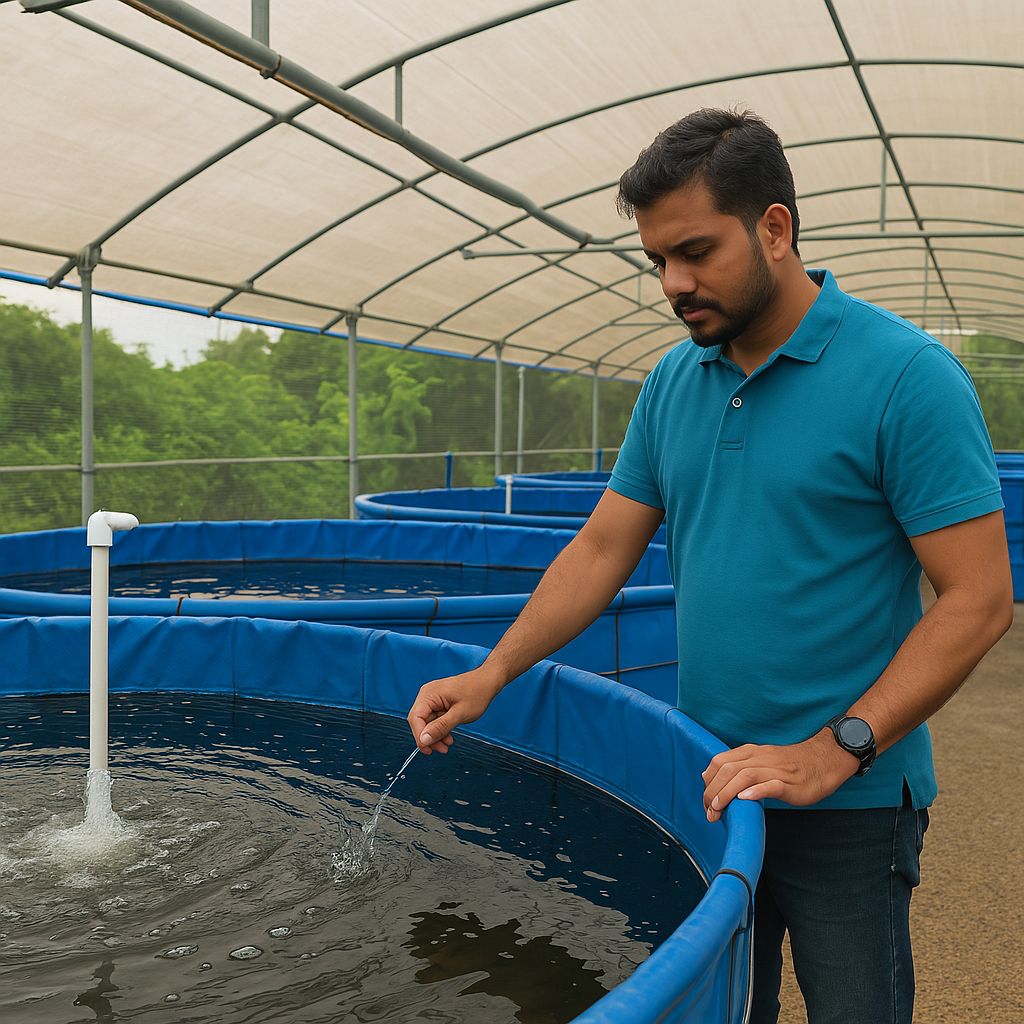🐟 All You Need To Know About Biofloc Fish Farming 🌱
Biofloc Fish Farming is emerging as one of the best available methods for fish farmers. In this article, we will help you to understand biofloc fish farming better.

Fish farming has evolved over the years, and one of the most exciting, sustainable, and cost-effective methods today is Biofloc Fish Farming. 🎣 This innovative aquaculture technique not only boosts productivity but also helps the environment by reducing waste. Curious to know more? Let’s dive deep into everything you need to know about Biofloc Fish Farming! 🌊
📌 What is Biofloc Fish Farming?
Biofloc is a revolutionary fish farming system where waste materials such as fish excreta and uneaten feed are converted into useful protein-rich feed through the action of beneficial bacteria and microorganisms. 🧫
In simple terms, it’s a zero-waste, eco-friendly fish farming method that increases productivity and reduces the cost of external feed. Perfect for farmers who want a high return on low investment! 💡
🧪 How Does Biofloc Work?
In a Biofloc system, tanks or ponds are filled with water containing fish. Instead of replacing water often like in traditional fish farms, Biofloc uses a biological process to treat and recycle waste within the system. Here’s how it works:
- The fish produce waste 🐟
- Waste contains ammonia (harmful in large quantities) ⚠️
- Carbon sources (like molasses) are added 🍬
- Beneficial microbes grow and convert ammonia into microbial protein 🔄
- This protein becomes natural food for the fish! 🍽️
The result? Clean water, less feed cost, and healthier fish. 🧼🐠
🌟 Benefits of Biofloc Fish Farming
This technique is gaining popularity worldwide, especially in countries like India, Indonesia, and Brazil. Here’s why:
- Low Water Usage 💧 – Recycles water efficiently and reduces water changes.
- Cost-effective Feed 🥗 – Microbes act as additional feed, cutting feed expenses by up to 30%.
- High Stock Density 🧺 – You can raise more fish per unit of water.
- Eco-Friendly 🌍 – Less waste is discharged into the environment.
- Prevents Diseases 🚫 – Healthy microbes reduce harmful pathogens.
- Better Growth Rate 📈 – Nutrient-rich environment promotes faster fish growth.
🔧 Biofloc System Setup Requirements
To start a Biofloc system, you’ll need some basic equipment and setup. Here’s a checklist:
- 🛢️ Tanks or Ponds – Circular tanks made of tarpaulin or concrete are ideal.
- 💨 Aeration System – Blowers or air pumps to maintain oxygen levels and mix the water.
- 🌡️ Water Heaters (optional) – To maintain temperature, especially in colder regions.
- 🧫 Probiotic & Carbon Source – For promoting microbial growth (molasses, jaggery, etc.).
- 💡 Power Supply – Uninterrupted electricity for 24x7 aeration.
- 🔍 Testing Kits – To monitor pH, ammonia, nitrite, and nitrate levels.
🐠 Suitable Fish Species for Biofloc
Not all fish species are suitable for Biofloc systems. Here are the most common ones that thrive in this method:
- Tilapia 🐟
- Catfish (Pangasius) 🐱
- Common Carp 🐠
- Mrigal 🐡
- Shrimp and Prawns (for some advanced setups) 🦐
These species can tolerate high stocking densities and adapt well to recycled water environments.
📊 Biofloc vs Traditional Fish Farming
| Aspect | Biofloc | Traditional |
|---|---|---|
| Water Use | Minimal | High |
| Feed Cost | Reduced | High |
| Space Required | Compact | Large |
| Disease Risk | Low | Moderate |
| Profit Margin | High | Moderate |
🧠 Tips for Beginners
- Start small and expand gradually.
- Ensure 24/7 aeration. Biofloc fails without oxygen!
- Monitor water quality regularly.
- Use good quality probiotics and feed.
- Maintain hygiene and clean tanks frequently.
💬 Common Questions About Biofloc
Q: Is Biofloc profitable?
A: Yes! With low input cost and high output, Biofloc can be a very profitable business model.
Q: Do I need land for this?
A: No. Biofloc can be set up even in urban areas on rooftops or backyards.
Q: Can I use Biofloc for shrimp farming?
A: Yes, but it requires a bit more technical knowledge compared to fish farming.
🔚 Final Thoughts
Biofloc Fish Farming is the future of sustainable aquaculture. It’s perfect for new-age farmers, entrepreneurs, and anyone passionate about healthy food and environmental conservation. 🌍🐟
With the right setup, proper monitoring, and dedication, you can turn this into a thriving and profitable venture. 💼💸
We hope this guide helped you understand the basics and benefits of Biofloc fish farming. If you're interested in starting your own setup, begin small, educate yourself continuously, and connect with other farmers and experts. Good luck! 🍀





